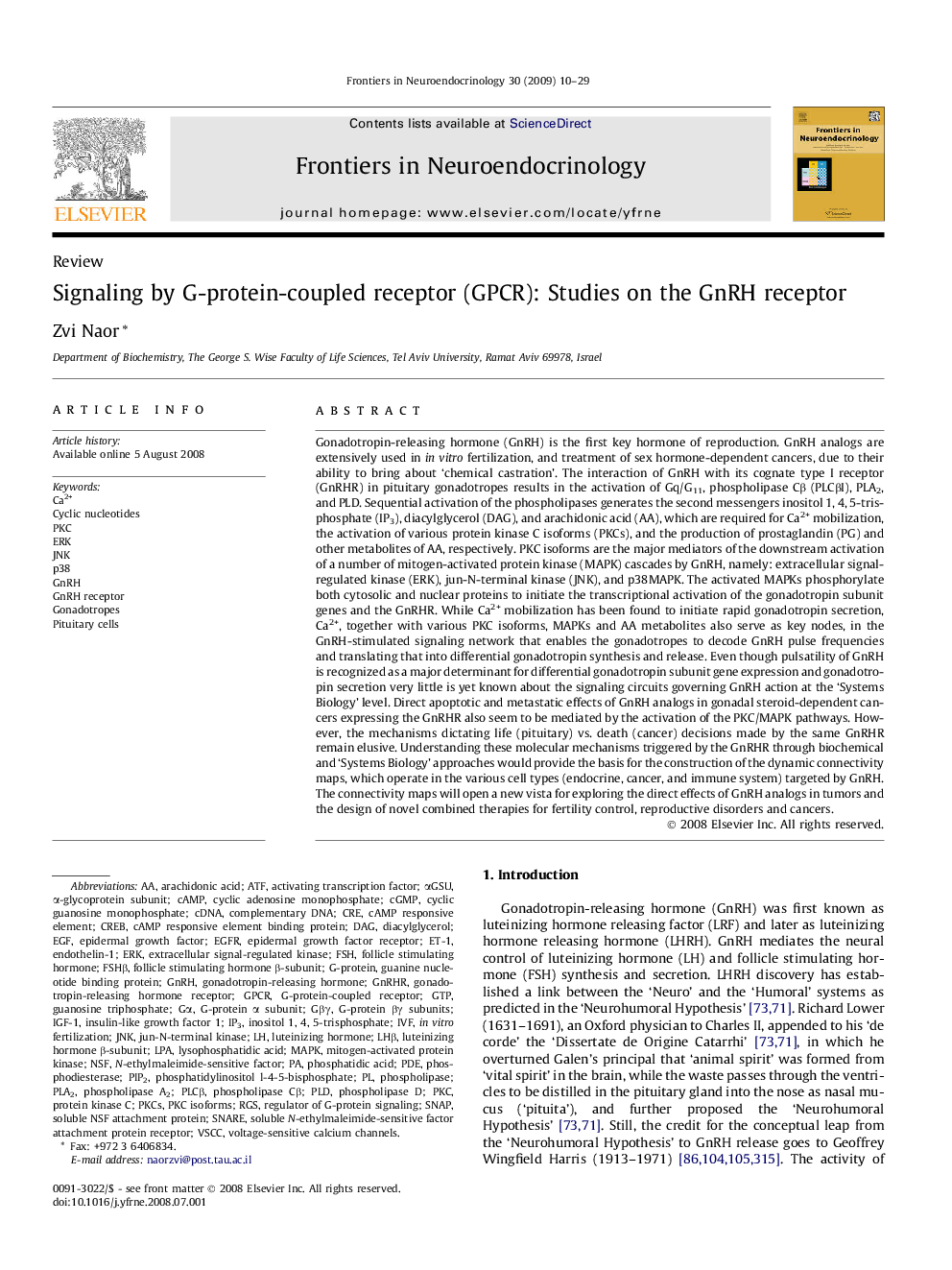| کد مقاله | کد نشریه | سال انتشار | مقاله انگلیسی | نسخه تمام متن |
|---|---|---|---|---|
| 2799525 | 1155990 | 2009 | 20 صفحه PDF | دانلود رایگان |

Gonadotropin-releasing hormone (GnRH) is the first key hormone of reproduction. GnRH analogs are extensively used in in vitro fertilization, and treatment of sex hormone-dependent cancers, due to their ability to bring about ‘chemical castration’. The interaction of GnRH with its cognate type I receptor (GnRHR) in pituitary gonadotropes results in the activation of Gq/G11, phospholipase Cβ (PLCβI), PLA2, and PLD. Sequential activation of the phospholipases generates the second messengers inositol 1, 4, 5-trisphosphate (IP3), diacylglycerol (DAG), and arachidonic acid (AA), which are required for Ca2+ mobilization, the activation of various protein kinase C isoforms (PKCs), and the production of prostaglandin (PG) and other metabolites of AA, respectively. PKC isoforms are the major mediators of the downstream activation of a number of mitogen-activated protein kinase (MAPK) cascades by GnRH, namely: extracellular signal-regulated kinase (ERK), jun-N-terminal kinase (JNK), and p38MAPK. The activated MAPKs phosphorylate both cytosolic and nuclear proteins to initiate the transcriptional activation of the gonadotropin subunit genes and the GnRHR. While Ca2+ mobilization has been found to initiate rapid gonadotropin secretion, Ca2+, together with various PKC isoforms, MAPKs and AA metabolites also serve as key nodes, in the GnRH-stimulated signaling network that enables the gonadotropes to decode GnRH pulse frequencies and translating that into differential gonadotropin synthesis and release. Even though pulsatility of GnRH is recognized as a major determinant for differential gonadotropin subunit gene expression and gonadotropin secretion very little is yet known about the signaling circuits governing GnRH action at the ‘Systems Biology’ level. Direct apoptotic and metastatic effects of GnRH analogs in gonadal steroid-dependent cancers expressing the GnRHR also seem to be mediated by the activation of the PKC/MAPK pathways. However, the mechanisms dictating life (pituitary) vs. death (cancer) decisions made by the same GnRHR remain elusive. Understanding these molecular mechanisms triggered by the GnRHR through biochemical and ‘Systems Biology’ approaches would provide the basis for the construction of the dynamic connectivity maps, which operate in the various cell types (endocrine, cancer, and immune system) targeted by GnRH. The connectivity maps will open a new vista for exploring the direct effects of GnRH analogs in tumors and the design of novel combined therapies for fertility control, reproductive disorders and cancers.
Journal: Frontiers in Neuroendocrinology - Volume 30, Issue 1, January 2009, Pages 10–29